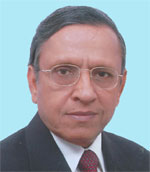
As part of the International Federation of Red Cross and Red Crescent Societies (IFRC), the Indian Red Cross Society finds itself in a position where it can advocate concrete and practical action before, during and after ensuing disasters. The threat of sudden climate change disaster is real and requires not only efficient early warning system in place but also measures to decrease losses of both lives and property as a consequence of these unpredictable calamities. It has been predicted after looking at the tipping points for global warming disasters, that there are noteworthy risks of sharp, sudden sea-level rise, water shortages and extinctions worldwide in coming years and decades. Climate change is real, it is happening now, and we need to deal with it, together. In the last century, the air and the water has warmed, snow and ice has melted, and the seas have risen. The world’s climate scientists already knew that, but they expressed renewed confidence in those troubling trends in a major report, the Intergovernmental Panel on Climate Change summary report, released in 2013, that has come to represent the global scientific consensus around global warming.
Disasters often follow natural hazards. A disaster's severity depends on how much it impacts the society and the environment. The scale of the impact in turn depends on how a society has decided to lead its everyday life. Each decision and action makes us more vulnerable to disasters - or more resilient to them.
India is one of the most disaster prone countries in the world. Due to its demographic profile, it is vulnerable to natural hazards of many kinds. The massive population and their proximity to areas of calamity, render the task of evacuation and relief extremely difficult. Since 2005, there has been a paradigm shift in the disaster management systems in India, which has resulted in an increased need for external assistance for disaster preparedness and resilience building.
The Indian Red Cross Society on its part has been implementing a plethora of disaster risk reduction activities in all the disaster prone states of the country. Post the massive Tsunami in 2004, it has been helping communities with livelihood aids as well as training them to become more disaster resilient. It has also started the First Medical Responders programme under which it is training volunteers from the communities to provide support during and post disasters. These FMRs are trained in different components of community support during any eventuality like rescue, first aid, psycho social support, relief distribution, management of shelters etc. Since the FMRs belong to the communities, they are often the first ones to reach with help during disasters. Their expertise and significance has been proved during the Uttarakhand landslides in June 2013, Cyclones Phailin, Helen and Lehar in October 2013, Jammu and Kashmir floods in September 2014 and yet again during cyclone Hud-Hud in October 2014.
It is still not possible to predict calamities with certainity. Hopefully near future will pave a way, but for now the focus needs to remain on community involvement and participation in disaster resilience and building up of capacities.
Dr S P Agarwal
Secretary General, IRCS

